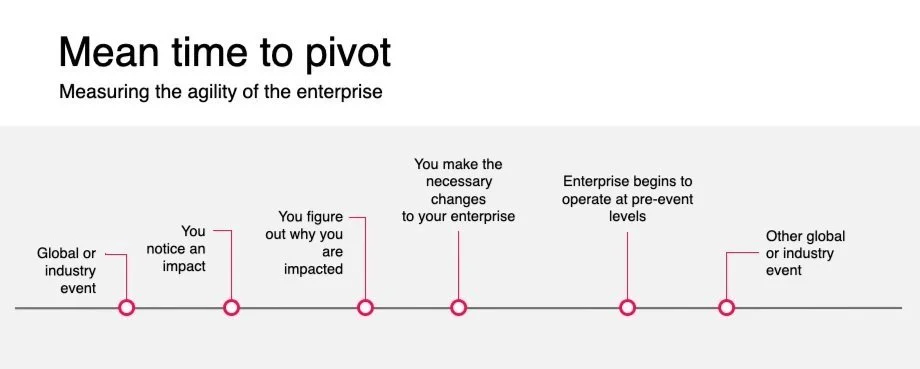Regardless of the organization, when I have conversations with an executive about metrics, they always ask
What’s the single most important metric?
Until recently, I believed you’d be doing that executive a disservice if you responded with a direct answer to the question. There’s nuance. That simple question has a complicated answer. To buy yourself a few minutes to explain, your answer might be “It depends”.
You see, large organizations are currently grappling with a myriad of challenges that require adept handling and innovative solutions. One of the major hurdles faced by these organizations is the rapid pace of technological advancements, which necessitates constant adaptation and adoption of new ways of working. Keeping up with emerging technologies, such as artificial intelligence and blockchain, while ensuring integration with legacy systems, is a complex task. Additionally, the increasing demands for data security and privacy in the digital realm add another layer of complexity, requiring organizations to allocate substantial resources to fortify their cybersecurity measures. Furthermore, the ever-evolving regulatory landscape poses a challenge, as organizations struggle to comply with new regulations and ensure ethical practices. Finally, managing a diverse and dispersed workforce, with teams spread across different locations and time zones, presents a unique set of challenges in terms of communication, coordination, and collaboration. Addressing these challenges is crucial for large organizations to stay competitive and thrive in an increasingly dynamic and interconnected business environment.
Every organization has a set of value drivers that will push them toward the need to change and evolve over time. You may be trying to get more products to market in less time or more predictably. You may be trying to surprise and delight more of your customer base. Or, you may be trying to future-proof your organization from unforeseen events, while you still can.
We often evangelize that enterprise-level agility will provide an organization-wide system that allows you to accomplish current and future goals while enabling you to evolve and innovate in the coming years. But the larger you get, the harder it gets. And because most organizations aren’t where they need to be, getting there is what is often called a Transformation.
But to do this, you need the ability to change direction; to pivot.
You don’t have the luxury of a crystal ball to tell you what is coming next, be it another global health crisis like a pandemic, supply chain disruptions, war, or economic recession. If you’re ill-prepared and unable to pivot when these things happen, the result will probably include layoffs, or worse, going out of business.
Ask the question again.
What’s the single most important metric?
Mean time to pivot (MTTP) timeline
To help you gauge if you have the ability to survive or thrive through the next crisis, you need a unit of measure of just how agile you are. If you are familiar with DevOps, you’re familiar with the popular metric called Mean Time to Recovery (MTTR). But this lagging indicator applies to the recovery of systems at a much smaller scale. You need something that can be implemented at an organizational level.
Mean time to pivot (MTTP)
Regardless of your way of working, I recommend the metric Mean Time to Pivot. I’m not talking about pivoting from a delivery team-level perspective here. I’m talking about the entire organization. How quickly can you actually react to a global, industry, or market event, to what's happening, after you realize how it’s impacting you internally and externally? How quickly can you figure out what to do, decide on a strategic pivot, and have that actually be meaningfully understood and executed throughout your organization?
Let’s say your sales have significantly dropped, compared to the previous year. You confirm sales have dropped due to macroeconomic conditions. You now need to make the necessary changes to your enterprise, to get you back to the previous year's levels.
As an executive, you will be faced with the choice to do the pivot (if you can) or persevere (if you have no other choice). This will lead to a series of “bets”. You lead with a hypothesis that the things you change will allow you to operate at pre-event levels. But, how long will it actually take for you to validate your hypothesis and have a bet pay off with pre-event levels? If you run out of time to figure it out or run out of bets you can place, then you either lose your standing in the market or worse risk going out of business.
